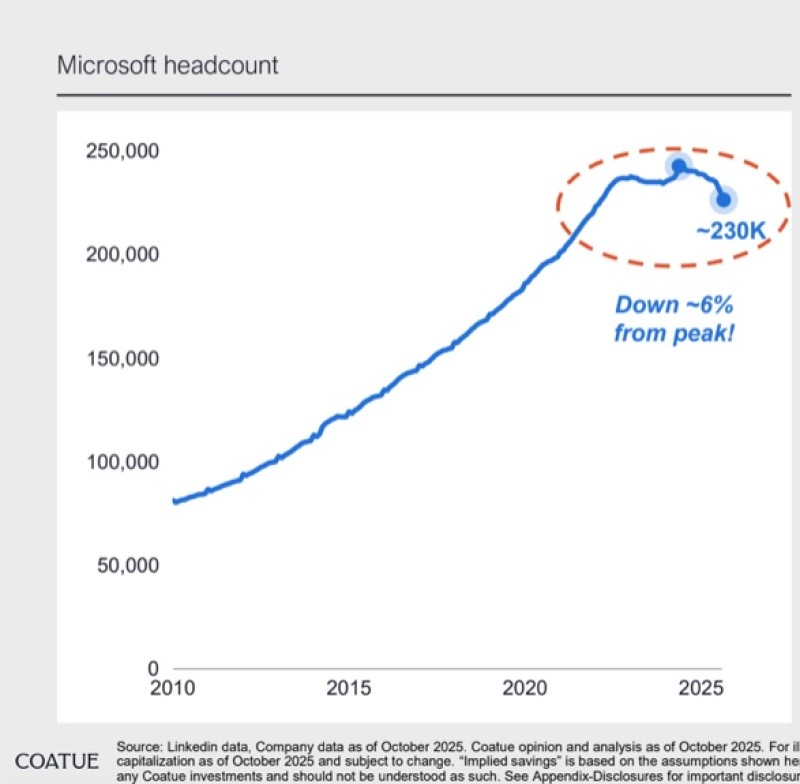A recent tweet from BuccoCapital Bloke revealed employment charts for Amazon and Microsoft that tell a striking story: the hiring boom of the "Magnificent 7" era appears to be over. After years of explosive workforce expansion, both tech giants have reached their employment peaks, marking a fundamental shift toward AI-powered productivity and automation.
The charts paint a clear picture. Amazon's headcount has plateaued near record highs, while Microsoft's has dropped roughly 6% from its peak. This isn't a sign of weakness—it's evidence that Big Tech is entering a new phase where growth comes from machines, not people.
Amazon: From Explosive Growth to Strategic Stabilization
According to BuccoCapital Bloke's analysis of S&P Global data, Amazon's workforce skyrocketed from under 250,000 in 2014 to nearly 1.6 million by 2021. The pandemic fueled this expansion as e-commerce demand surged. But since 2022, growth has stalled around 1.5–1.6 million.

Warehouse robots now handle tasks that once required human workers, e-commerce demand has normalized, and CEO Andy Jassy has pushed cost optimization. Amazon isn't hiring less because it's struggling—it's producing more with fewer people.
Microsoft: A Calculated Pullback
Microsoft's story, drawn from LinkedIn and Coatue data, shows a decade of steady hiring that peaked around 245,000 employees before declining to roughly 230,000—a 6% drop. This reflects the company's pivot to AI infrastructure.

Copilot and Azure AI services have shifted resources away from traditional development toward scalable automation. AI tools now enable smaller teams to accomplish more, and the company is optimizing costs as cloud growth slows. Despite the reduced headcount, Microsoft remains financially robust, proving that future growth doesn't require an ever-expanding workforce.
The Broader Trend: Peak Magnificent 7 Employment
These patterns support a larger thesis: we've hit peak employment across the Magnificent 7—Amazon, Microsoft, Apple, Meta, Google, Nvidia, and Tesla. The hiring sprees are over. In their place: automation, AI integration, and leaner operations focused on margin expansion and capital efficiency. AI systems now handle logistics optimization, software development, and countless tasks that once required human labor. Scale no longer depends on headcount but on algorithmic power.
What This Means Going Forward
The flattening of Big Tech employment isn't just a labor market footnote—it's a signal of economic transformation. Tech companies are becoming machine-augmented enterprises where growth comes from intelligence, not personnel. If this continues, 2025 may be remembered as the turning point when Big Tech stopped expanding through people and started expanding through AI.
 Eseandre Mordi
Eseandre Mordi

 Eseandre Mordi
Eseandre Mordi


